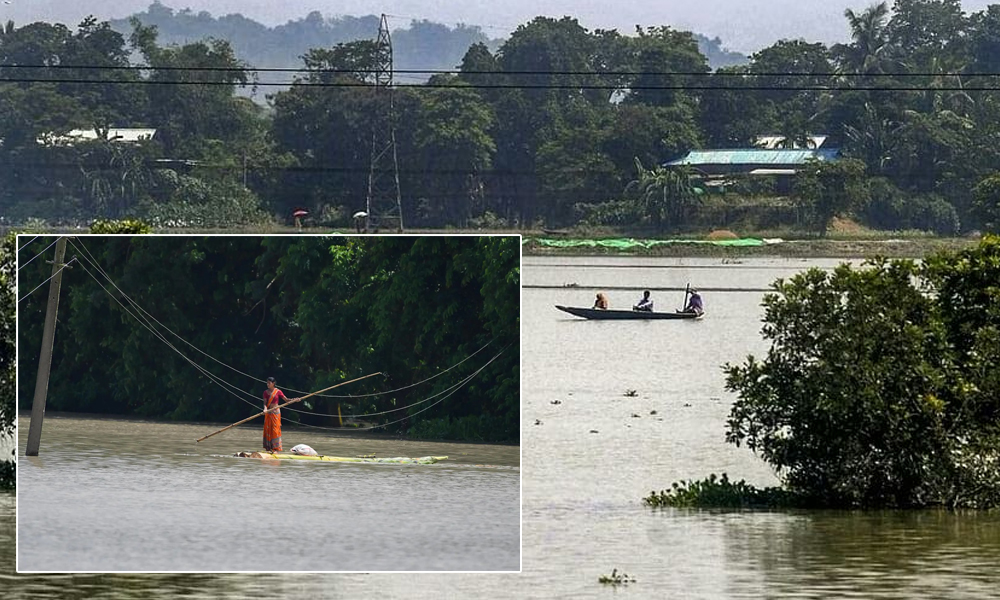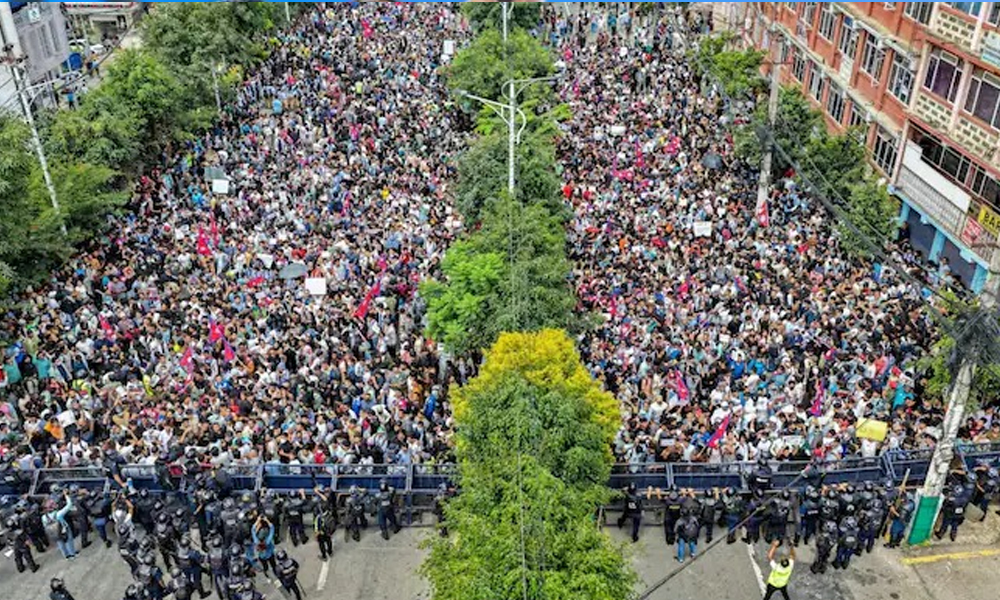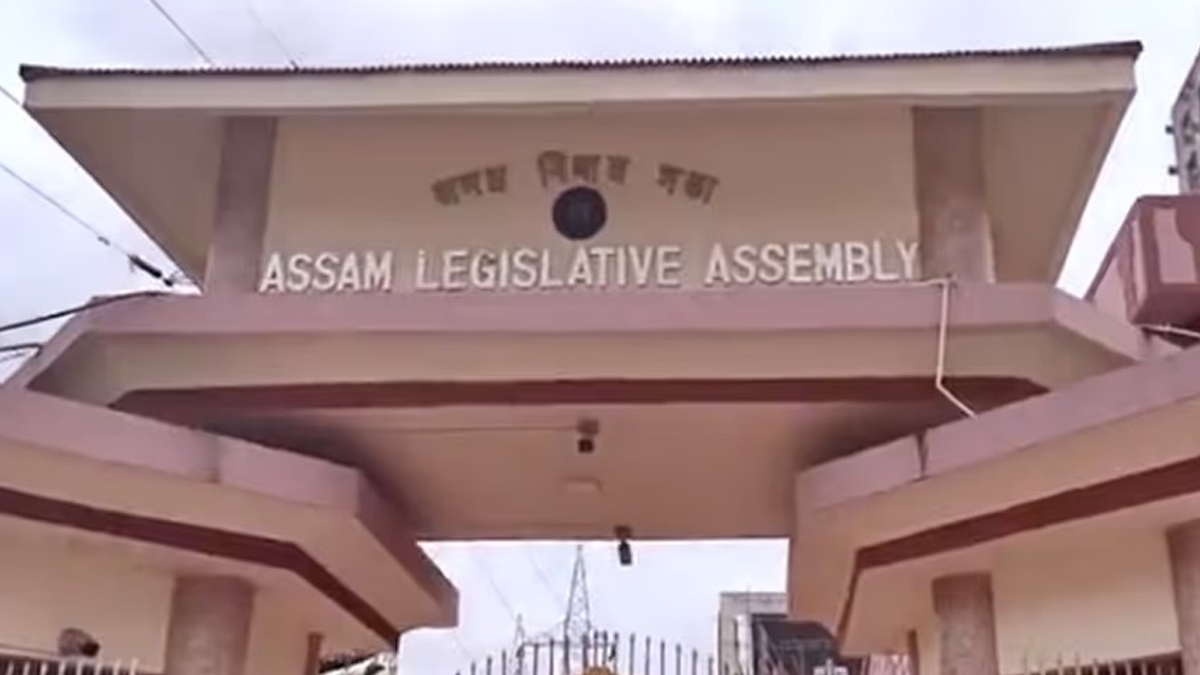Digital Desk: Floods in Assam have become increasingly severe and frequent in the recent years, causing disruption and tension across the state. Analysis of satellite data has revealed that floods have affected 27.09 lakh hectares of land in 35 districts of Assam in the last 25 years. This is over 34 per cent of the total area of the state and around 9 per cent of the total flood prone area of the country. Assam has always been prone to flood, as it is located in one of India’s top four flood prone regions, the Brahmaputra basin. While the rest of the country also witnesses different type of floods such as coastal, urban, river and ponding floods, as well as occasional flash floods, Assam has been particularly affected from more regular and considerably more devastating floods.
History of Floods in Assam
A wide range of evidence suggests that the intensity and impact of Assam’s annual floods increased after the 1950 earthquake, which had a moment magnitude of 8.6. This earthquake, like many earlier ones, introduced several changes in the Assam’s environment. These changes left a lasting impact on the state’s rivers, including the powerful Brahmaputra, other water bodies, and paddy fields, most of which never returned to their original state. The environmental crisis of 1950 aggravated Assam’s annual flooding pattern. The affects were felt from 1952 onwards.
According to the Assam State Disaster Management Authority (ASDMA), major floods occurred in Assam in 1972, 1974, 1978, 1983, 1986, 1988, 1996, 1998, 2000, 2004, and 2012. Since then, the state has experienced annual flash floods and long term floods inundations in 2018, 2020, 2021, 2022, and 2024.
Historical data reveals an alarming rise in flood impacts. Between the 1950s and the early 2000s, both the average annual flooded area and cropland affected saw a steady increase. During this period, the number of people affected surged from 860,000 to over 4.5 million.
Human Toll and District Wise Devastation
While floods impact large parts of Assam every year, some districts consistently experience the worst devastation. According to the Assam State Disaster Management Authority (ASDMA), a total of 838 people lost their lives in floods between 2013 and 2022.
Dhubri, where two rivers meet, saw over 775,000 people affected in 2022. Barpeta, faced an even greater toll, with more than 1 million people affected. In Southern Assam, Cachar suffered severe flooding in the same year, affecting over 500,000 people.
In 2023, Lakhimpur was the worst hit, with more than 23,516 people affected by the floods. Dibrugarh followed with 3,857 people impacted, while Darrang and Biswanath each saw 2,231 affected.
In 2024, according to ASDMA, 1,05,786 people living in 309 villages across 14 villages of Assam were affected by the floods.
This year, on May 31, the region’s largest city, Guwahati, recorded its highest May rainfall, as reported by the Local Meteorological Department, drowning half of the city. The floods affected about 515,000 people on June 2, and the state reported a death toll of seven, including 2 children. The Assam government estimated that 1,000 animals, mostly livestock, have been washed away by the torrents of flood, impacting 460,000 animals. As of June 2, when the State Disaster Management Agency compiled data, Sribhumi, bordering Bangladesh remains one of the worst hit districts, with 289 villages fully submerged by the waters of the Barak River and its smaller tributaries.
Why does Assam flood every year?
Assam’s extensive river network, encompassing the Brahmaputra and Barak River along with numerous tributaries, makes the state particularly prone to flooding. Additionally, Assam receives water from neighbouring states such as Arunachal Pradesh and Meghalaya. Consequently, when these regions experience heavy rainfall or cloud bursts, the excess water flows into Assam, triggering floods.
The encroachment of river banks and wetlands has become a significant factor aggravating the flood situation. As people build homes, farm, and develop infrastructure near rivers, they block the natural flow of water. As a result, the water gets confined within a narrower channel, leading to increased water levels and subsequent flooding.
Another major issue is the lack of proper drainage system. The absence of well planned and properly maintained drainage system hinders the efficient and timely disposal of excess water during periods of heavy rainfall. Insufficient or clogged drains in urban areas prevent the swift evacuation of water, resulting in water logging and increased flood risks.
Rapid and unplanned urbanisation adds to the problem. As cities and towns expand without adequate land use planning, essential considerations for flood mitigation measures are often overlooked. Construction activities, including the development of buildings, roads, and infrastructure, lead to the sealing of natural surfaces, such as wetlands and permeable soil. This reduces the land’s ability to absorb water, resulting in increased surface runoff and decreases groundwater absorption, which ultimately worsens the flood situation. The uncontrolled urban expansion also leads to the elimination of open spaces and green cover, which play a crucial role in flood control and water absorption.
Government Initiatives and Responses (2025)
This year, in response to the recurring flood crisis, the Assam Government has implemented several measures to improve preparedness. One of the key steps included conducting Flood drills across the state from April 15 to 13, specifically aimed at enhancing readiness. The National Disaster Response Force (NDRF) has also been strategically positioned in high risk districts, including Cachar, Barpeta, Jorhat, and Dibrugarh to facilitate rapid deployment during emergencies.
To address the issue of artificial flooding in Guwahati, the government has launched a mission called “Mission Flood Free Guwahati” involving all allied departments and stakeholders. These departments are working in coordination to mitigate the issue of urban flooding in the city.
Conclusion
The floods in Assam have increased in recent years, causing severe damage to people, animals, and property. While the natural forces play a part, human actions such as poor planning and rapid urbanisation have significantly worsened the problem. The Government has implemented measures to support the people and address the issue, but immediate and long term solutions are essentially required to protect the state from future flooding.
























